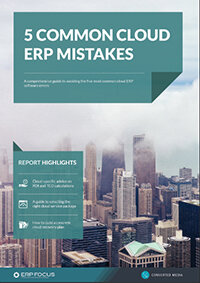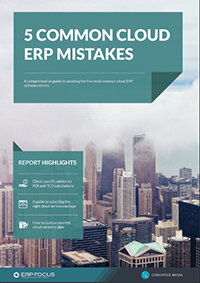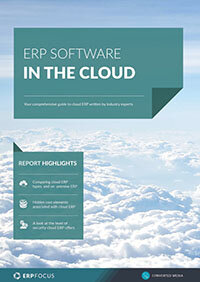Multi-cloud vs. hybrid cloud ERP architecture
In the beginning there was “distributed computing”. This was followed by “client/server” which evolved to become a series of hybrid cloud/on-premise platforms largely spurred on by SaaS innovations. In turn, this evolution fostered numerous “pure-cloud” variants; and today, “multi-cloud” and “hybrid-cloud” systems are appearing in the market. So what are the differences between these architectures, and how do they apply to ERP operations?
While dissimilarities between the two approaches are subtle to be sure, there are some common wrinkles that require closer investigation.
Hybrid cloud
In hybrid cloud systems, all cloud operations result from an integrated information environment, derived by a complex of private and public computing environments. However, each discrete ecosystem provides different functions and operational yields that, in turn, are serially consolidated to create one or more final systems.
Business advantages include:
- Disparate cloud ERP providers can create integrated service values
- Disparate cloud ERP providers can extend end-to-end business values quickly
- Multiple ERP-driven enterprises operating private clouds can integrate with public cloud providers leading to larger, more sophisticated information infrastructures
Recommended reading: ERP software in the cloud - your introductory guide to cloud ERP software
Multi-cloud
In the case of this architecture, all operations occur on the basis of multiple public computing environments interacting in parallel. All functions, operational yields, and process loads are shared, and all consolidated work products are available simultaneously.
Business advantages include:
- Multi-cloud can provide active and intrinsic recovery in the event of cloud ERP failure
- ERP systems relying on this architecture typically experience high performance
- ERP business continuity concerns are largely marginalized
Cloud ERP values
In the case of multi-cloud ERP versus hybrid cloud ERP, four central value points apply equally including:
Scalability - hybrid and multi-cloud platforms offer demand-based scalability, with fewer operational barriers, since all resources are largely insulated by larger cloud infrastructures.
Cost efficiencies - hybrid and multi-clouds allow enterprises to leverage cost advantages by utilizing multiple platform partners.
Security - hybrid and multi-cloud models can provide end-to-end security, along with an ability to satisfy holistic business data handling and storage requirements at business control and regulatory levels.
Flexibility - hybrid and multi-cloud constructs offer intrinsic abilities to secure and scale public resource management processes, offering extended business values well into the future.
From an ERP perspective, either of these architectures can create a host of opportunities for enterprises to grow one or more data infrastructures without breaking the bank. However, like any other technology, identifying and implementing just the right solution, at just the right time, will continue to be a challenge. An ability to bring one’s “A game” will have to be part of any decision-making mix for the foreseeable future.
Free white paper

Five common cloud ERP mistakes
Get your comprehensive guide to avoiding the five most common cloud ERP errors

Featured white papers
-

Five common cloud ERP mistakes
Get your comprehensive guide to avoiding the five most common cloud ERP errors
Download -

Related articles
-

Why you shouldn't underestimate cloud ERP consultant costs
Make sure to take the cost of a consultant into account when planning your cloud ERP budget
-

CMMC Compliance: What Aerospace and Defense Manufacturers Need to Know
Key insights on CMMC compliance, deadlines, and securing DoD contracts with CMMC 2.0 certificatio...
-

Cloud ERP vs on-premise ERP: an objective comparison
Are you choosing between cloud ERP and on-premise ERP? This balanced guide will help

